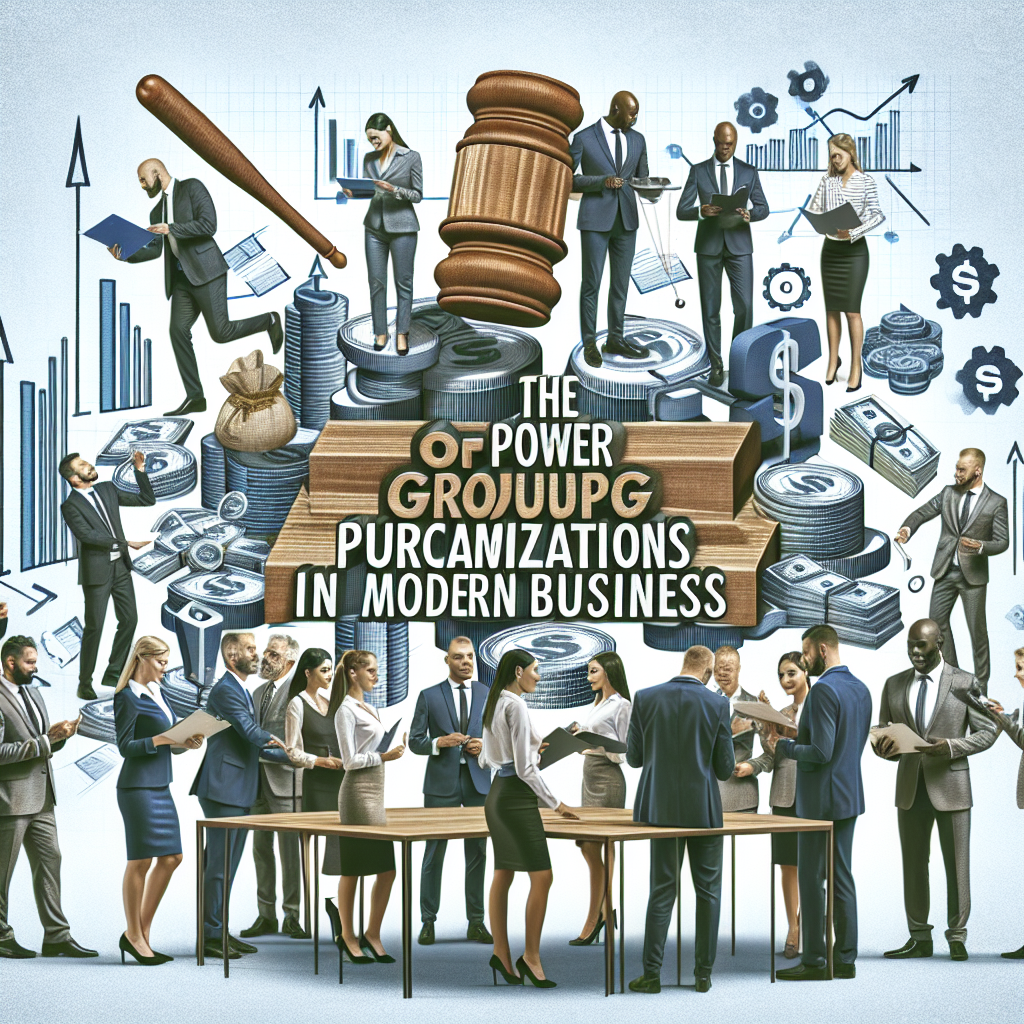The Evolution of Annual Supplier Summits
Annual supplier summits serve as vital platforms for fostering and strengthening supplier relationships. These gatherings bring together key stakeholders, facilitating discussions that promote collaboration and mutual growth.
Key elements of these summits include:
- Networking Opportunities: Connecting suppliers with potential partners to explore new synergies.
- Knowledge Sharing: Providing insights into market trends and best practices.
- Strategic Alignment: Ensuring suppliers understand the goals and challenges of their partners.
Recently, the focus areas of annual supplier summits have evolved to better align with the rapidly changing marketplace. Emphasis is shifting towards innovation, diversity, and consumer-centric strategies. This transformation reflects a proactive approach to adapting supplier partnerships to meet contemporary business needs, enhancing competitiveness in a dynamic environment.
Areas of Focus in Supplier Summits
Here are some specific areas that are being discussed in supplier summits:
- Tail Spend Management: This strategy aims to optimize the procurement process by effectively managing less critical spend categories. It not only helps in cost reduction but also allows businesses to concentrate on their core competencies.
- Essential PPE for Airborne Precautions in Healthcare: In light of recent global events, there’s an increased emphasis on discussing the procurement of crucial supplies like personal protective equipment (PPE) during supplier summits. This ensures that healthcare providers are well-equipped to handle such situations.
- Maximizing Federal Grant Funding for Nonprofits: These grants can provide much-needed financial support for various initiatives, and understanding how to leverage them effectively is crucial for nonprofit organizations.
- Boosting Employee Morale with Break Room Supplies: It’s important to remember that supplier partnerships are not solely about transactions; they also play a crucial role in enhancing employee satisfaction and productivity through providing well-stocked break rooms.
By addressing these topics during annual supplier summits, businesses can adapt their strategies and partnerships to thrive in today’s ever-changing landscape.
1. Embracing Innovation as a Driving Force
Annual supplier summits have increasingly emphasized innovation as a core theme. These gatherings serve as platforms for suppliers to showcase cutting-edge solutions that align with contemporary market trends. The focus on innovative strategies enables organizations to adapt swiftly to the dynamic landscape of their industries.
Case Study: WEG’s Recognition at the GEA Annual Supplier Summit
A prime example of innovation’s impact can be seen in WEG’s recognition at the GEA Annual Supplier Summit. The company received accolades for its groundbreaking advancements in electrical engineering and automation. By integrating new technologies, WEG not only enhanced its product offerings but also improved operational efficiencies for its clients. This recognition underscores how innovation is not merely an option but a necessity for suppliers aiming to maintain competitive advantages.
Embracing innovation facilitates suppliers’ ability to respond effectively to changing market demands. Key benefits include:
- Agility in Operations: Innovative processes allow suppliers to pivot quickly in response to emerging trends.
- Enhanced Product Development: New technologies lead to the creation of products that better meet consumer expectations, such as eco-friendly options or smart technologies.
- Improved Collaboration: Innovative approaches foster stronger partnerships among suppliers and clients, leading to shared growth opportunities.
By prioritizing innovation, suppliers can position themselves as leaders in their field. Continuous development becomes essential for sustaining relevance and meeting the evolving needs of customers. The commitment to innovation reflects a forward-thinking mindset that can transform challenges into opportunities within the supply chain ecosystem.
However, maintaining this innovative edge often requires more than just adopting new technologies. It necessitates a strategic approach towards procurement and supplier management. For instance, optimizing your one-person procurement function can lead to significant cost efficiencies and improved supplier relationships.
Moreover, understanding the difference between purchasing groups and group purchasing organizations (GPOs) can further enhance procurement strategies. While both aim to leverage bulk buying power, they operate differently and serve distinct purposes.
In addition, embracing frugal living practices can also contribute to cost savings in daily operations, thereby freeing up resources for innovation.
Furthermore, leveraging advanced procurement software can streamline processes and enhance efficiency. This technology-driven approach allows for better data management, supplier tracking, and overall procurement strategy execution.
Lastly, it’s crucial to address common misconceptions surrounding purchasing practices. By myth-busting some prevalent beliefs about GPOs, suppliers can make more informed decisions that align with their innovative goals.
2. Fostering Diversity for Enhanced Competitiveness
Diversity in supplier summits is gaining traction as a vital strategy for cultivating a more inclusive supply chain ecosystem. Events like Wakefern Food Corp.’s Own Brands Supplier Diversity Summit exemplify this trend, showcasing the commitment to integrating minority-owned businesses into sourcing strategies. It aligns with the broader industry movement towards promoting diverse suppliers, which is essential for creating a more equitable business environment.
Benefits of Diverse Suppliers
Incorporating diverse suppliers brings numerous advantages to organizations:
- Increased Creativity: A variety of perspectives fosters innovative thinking. This diversity can lead to unique product offerings that resonate with a broader customer base.
- Enhanced Problem Solving: Teams composed of individuals from different backgrounds can approach challenges more creatively, resulting in effective solutions that may not arise in more homogeneous groups.
- Market Responsiveness: Diverse suppliers often have insights into specific demographics, enabling brands to tailor products and services to meet varied consumer needs.
Competitive Edge Through Inclusion
Fostering diversity not only enriches product lines but can also provide a competitive advantage:
- Access to New Markets: Engaging minority-owned businesses opens doors to previously untapped markets. These partnerships can help brands build relationships with diverse customer segments.
- Reputation and Trust: Companies committed to inclusivity often enjoy enhanced brand loyalty. Consumers increasingly prefer brands that reflect their values, including equitable treatment across all business practices.
Moreover, such companies can leverage GPO membership benefits, which provide access to bulk purchasing power, further enhancing their competitive edge.
Investment in diversity-focused initiatives leads to robust supplier networks characterized by resilience and adaptability. Embracing these principles positions organizations favorably within today’s global marketplace, where consumers demand authenticity and representation from the brands they support. This shift toward inclusive sourcing is essential for businesses aiming to thrive in an ever-evolving economic landscape.
Furthermore, it is crucial for companies to stay updated on the latest trends in supplier innovation such as those outlined in our article on top trends in supplier innovation. Such knowledge not only aids in better compliance-driven sourcing but also enhances the overall procurement strategy of the organization.
For individuals looking to make their mark in this evolving field, exploring entry-level procurement jobs could be a great starting point.
3. Building Strategic Partnerships for Collaborative Success
Establishing strong relationships with key suppliers is essential for long-term success in today’s competitive landscape. Strategic partnerships can enhance supply chain efficiency, foster innovation, and drive mutual growth. Annual supplier summits provide ideal platforms for these vital connections.
Key takeaways from the ADS Annual Strategic Supplier Summit highlight the importance of leveraging collaboration opportunities:
- Shared Objectives: Partners can align goals to streamline processes, reduce costs, and enhance product offerings. This is particularly relevant when considering the power of leveraging drastic cost reduction through collective spend.
- Knowledge Exchange: Regular interaction at summits allows suppliers to share insights into market trends, challenges, and solutions. Such learning experiences echo Frank Corris’s transformative journey in mastering procurement through continuous learning and strategic thinking.
- Resource Optimization: Collaborating with strategic partners enables companies to utilize resources more effectively, leading to improved service delivery. This aspect aligns with the principles of strategic sourcing, which focuses on optimizing procurement processes.
The focus on strategic partnerships reflects a broader trend in annual supplier summits. Organizations are increasingly recognizing that collaboration goes beyond transactional relationships. By fostering an environment of trust and open communication, companies can cultivate mutually beneficial arrangements that lead to innovation and improved competitiveness.
For instance, partnerships formed during these events often result in co-development projects or joint marketing efforts. This not only enhances product offerings but also strengthens brand positioning in the marketplace.
Ultimately, companies invested in developing strategic partnerships position themselves for sustainable growth while navigating the complexities of today’s supply chains. Embracing these collaborative practices will be crucial as businesses strive to adapt to evolving consumer demands and market conditions. However, it’s also important to remember that such collaborations might face challenges. Therefore, building resilience for tough times in procurement is a critical strategy that organizations should consider.
4. Staying Ahead with Consumer-Centric Product Development Strategies
Supplier summits serve as vital platforms for introducing innovative and health-conscious products that resonate with current consumer demands. In a landscape marked by rapid changes in consumer preferences, these events provide suppliers the opportunity to align their offerings with market trends.
Product Development Trends Introduced at Summits
- Focus on health and wellness products
- Increased demand for transparency in ingredient sourcing
- Emphasis on sustainability and eco-friendly packaging
The Wakefern Food Corp. summit highlighted the growing popularity of clean-label options, which are products free from artificial ingredients and preservatives. This trend reflects a broader shift towards healthier lifestyles among consumers, who are increasingly scrutinizing product labels before making purchasing decisions.
Key highlights from Wakefern’s discussions included:
- Rising consumer awareness of nutrition and health impacts
- The importance of clear labeling and honest marketing
- Opportunities for suppliers to innovate in line with these preferences
By leveraging insights gained from such summits, suppliers can develop products that not only meet but exceed consumer expectations. Engaging directly with industry leaders allows for a comprehensive understanding of shifting market dynamics. This connection fosters an environment that encourages creativity, ensuring that suppliers remain competitive and relevant in a crowded marketplace.
Moreover, adopting effective sourcing strategies for hiring top talent can significantly enhance a supplier’s ability to innovate and adapt to changing consumer needs. Such strategies are crucial in optimizing procurement processes, which can lead to more efficient product development cycles.
Emphasizing consumer-centric strategies will ultimately lead to enhanced satisfaction and loyalty, essential elements for sustained business growth.
5. Unlocking Networking Potential for Future Collaborations
Supplier summits serve as vital platforms for networking opportunities that can significantly shape industry connections. The structured environments of these events encourage interactions among suppliers, buyers, and industry leaders, creating a fertile ground for collaboration.
Key aspects of networking at supplier summits include:
- Access to Diverse Stakeholders: Attendees come from various sectors and backgrounds, allowing you to connect with potential partners who share different insights and expertise.
- Facilitated Discussions: Many summits incorporate breakout sessions or roundtable discussions designed specifically to foster meaningful conversations, enabling you to engage in deeper dialogues than typical trade shows.
- Networking Events: Social gatherings during the summit provide informal settings where lasting relationships can be formed over shared interests.
The collaborations that emerge from these interactions can have profound implications for business growth:
- Innovative Partnerships: You may discover synergistic opportunities that lead to innovative product developments or service enhancements.
- Resilience Through Alliances: Establishing strong connections can bolster your supply chain’s agility, making it more adaptive to changes in the marketplace.
- Knowledge Sharing: Collaborating with diverse partners allows for exchange of best practices and industry knowledge, enhancing your competitive advantage.
Recognizing the value of networking spaces at supplier summits cultivates an environment ripe for collaboration. Engaging actively in these opportunities not only strengthens individual businesses but also contributes to a more interconnected and resilient supply chain ecosystem.
However, it’s crucial to approach these networking opportunities strategically. To succeed with limited resources, you should embrace constraints, optimize processes, and leverage networks for business success. Moreover, understanding certain procurement terms can greatly enhance your ability to communicate procurement’s value effectively during these interactions.
The Future of Supplier Summits: A Commitment to Continuous Evolution and Collaboration
To understand the future of supplier summits, we need to look at the emerging trends in supplier partnership dynamics. Here are two key areas we should focus on:
- Innovation: We must commit to integrating cutting-edge solutions that meet evolving market demands.
- Diversity: It’s important to emphasize the significance of inclusive supply chains that foster creativity and resilience.
These elements are crucial for maintaining competitive advantages in today’s global marketplace. Supplier summits will serve as platforms for sharing insights, best practices, and collaborative strategies.
Your Role in Shaping the Future
Engagement is essential. You can play a pivotal role in shaping the future of your own supplier summits by embracing these key trends:
- Actively participate in discussions around innovation and diversity.
- Network with diverse suppliers to enhance your product offerings.
- Leverage collaborations formed at these events to drive growth.
By taking these steps, you contribute to a more dynamic and responsive supply chain ecosystem. The ongoing evolution of annual supplier summit trends will shape how businesses adapt, innovate, and thrive in an increasingly interconnected world.
Maximizing Supplier Performance
Moreover, it’s important to focus on maximizing supplier performance during these summits. This ensures quality and reliability in the products we offer.
Looking Ahead: Salary Trends for Procurement Engineers
As we look towards 2025, those involved in procurement should also be aware of the salary trends for procurement engineers, which may influence hiring decisions and supplier partnerships moving forward.





